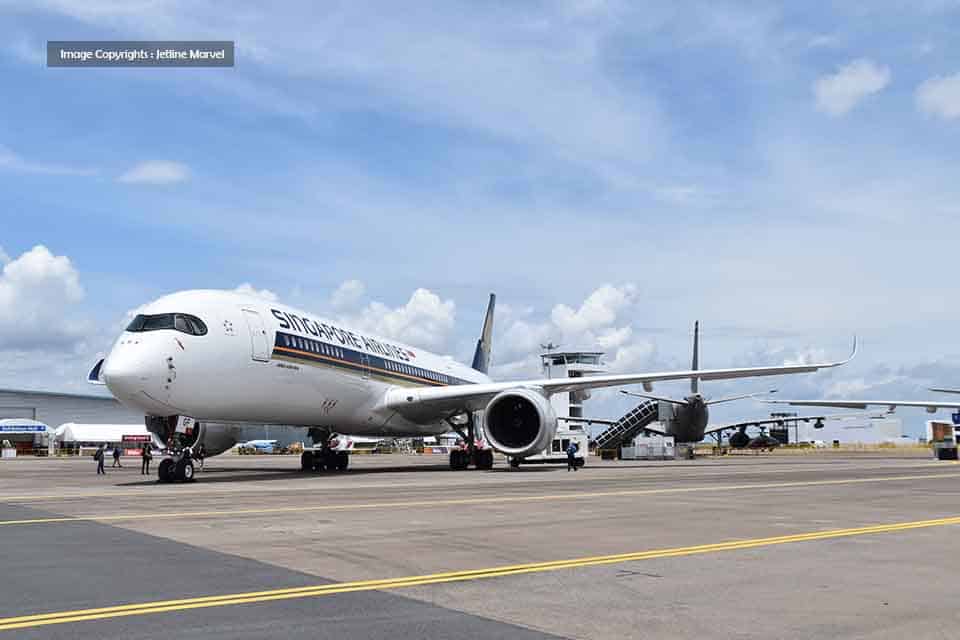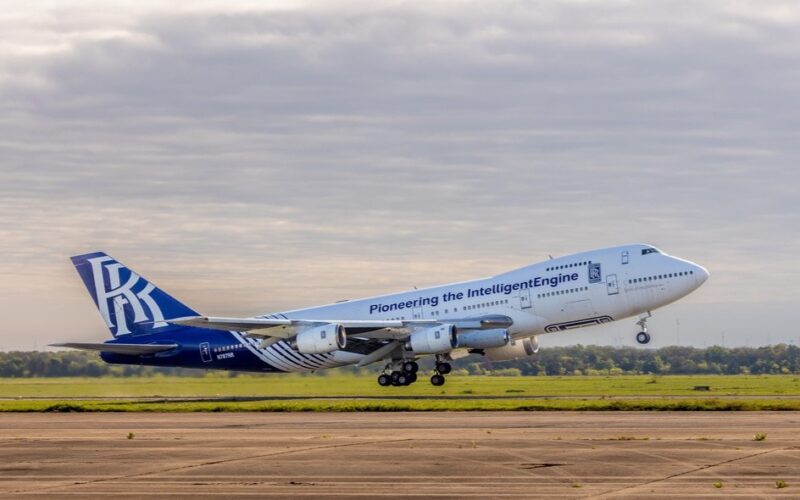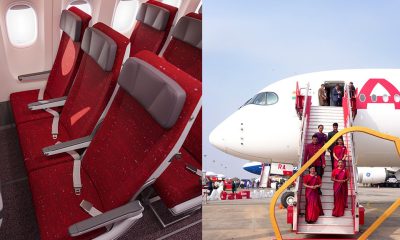Aerospace
Singapore Airlines A380 delivered in 2009 being scrapped at Singapore
A Singapore Airlines Airbus A380 delivered to the airline in 2009, was scrapped at Changi Airport, 10 years after service #A380 #SingaporeAirlines #SIA

The Airbus A380, an engineering marvel, is being laid to rest in a cemetery. As you can see in the pictures, a Singapore Airlines A380 was just scrapped at Changi airport. The superjumbo aircraft’s sad finish
The first A380 registered F-WWOW made its first flight on April 27, 2005, after being unveiled in Toulouse in 2005. The Trent 900 engine was installed in the aircraft. The initial test flight crew compared it to riding a bicycle. The A380’s first customer was Singapore Airlines, which began flying planes in 2007.
The airplane is the direct rival to the Boeing 747, which is no longer in production. However, the A380 was also discontinued due to a decline in market demand.
Over 7.3 million block hours, the global A380 fleet had accomplished more than 800,000 flights without a single fatality or hull loss.
-
Lower seat availability.
The decreased passenger occupancy rate in the aircraft is likely to have an impact. Obviously, airlines must engage in extensive marketing to attract high-end travelers, and due to their size, must operate out of larger airports like London Heathrow, Dubai, and Singapore Changi, which has a direct impact on the cost of passengers’ tickets.
-
The cost of airplane maintenance is high.
Airworthiness authority regulations mandate certain regular checks from authorized aircraft tool shops as the A380 fleet ages. As a result of the larger size and greater number of parts on an aircraft, maintaining it takes more time, which has an adverse effect on the operations of airlines. In 2014, the Emirates conducted its first 3C-check in 55 days. Some airlines will take advantage of extended shop stays to install new interiors. However, a small number of airlines must incur high maintenance costs and operate with interruptions due to extended hanger stays.
-
Shorter life cycle.
As aircraft age, most airlines retire them after 12 to 14 years of service. After that, they can find a second lease on life as freighter versions, which can operate for an additional 15 years. It will eventually be recycled. However, the scenario in the A380 was different.
The only reason the Boeing 747 has survived longer is that its airframe can be used for both passenger and freighter versions of the aircraft, whereas Airbus has no plans for converting any of its aircraft into freighters.
How should I proceed if an aircraft is about to crash?(Opens in a new browser tab)
Since at least June 2005, Airbus has offered the A380F, a cargo variant with a maximum payload capacity of 150 t (330,000 lb) and a range of 5,600 nmi (10,400 km). Compared to the Boeing 747-8F, it would have had a 7% greater payload and a greater range, although it would have cost more to travel.
There was no specific release date, and production was halted until the A380 production lines were stabilized.
Airbus realized their error, and the A350 is now available in a cargo form. The Freighter version of the aircraft was launched in 2022, and it will undoubtedly bring in more customers and expand the services offered by the airlines.
China’s top 3 airlines will purchase nearly 300 Airbus A320neo aircraft.(Opens in a new browser tab)
-
COVID Issues
The biggest impact on airlines is Covid. The majority of airlines ceased operations and grounded numerous aircraft, although doing so for the A380 would be more costly for more airlines as the aircraft’s operating costs and age soared. Airlines’ business has increased over the past year for COVID purposes. Airlines struggle to run the A380, and the CEO of Qatar Airways stated that there are no plans to bring the A380 back. Many airlines have sent their planes to be stored in France and other locations that are only targeted at the lower end of the market.
-
No secondary market value
The airplane has no resale value; numerous airlines attempted to sell it to other carriers but were unsuccessful. who has a big market share but they did not want to operate it once again, just as Emirates did not want to purchase the second aircraft. As Singapore Airlines discontinued operating these four A380 aircraft in 2017, the Dr. Peter Lease Company, who provided Singapore with those aircraft, found it difficult to find a new customer for their A380. When they were unable to locate an operator, they ultimately made the decision to sell each individual part to another airline operator for a price between $30 and $50 million. thus in 2019, the airplane was disassembled.
The explanation cited by Air France for grounding the A380 was that the cabin modifications would cost close to $45 million, Lufthansa would declare them unprofitable, and other airlines with less market share would only fill 30% of the available seats.
Since Emirates owns half of the A380 aircraft built to date, it is one of the few airlines that still have the courage to fly. Due to its strong brand recognition, Emirates has high passenger utilization rates on its A380 aircraft. They regularly upgrade the interior and business and first-class seating, maintaining the passengers’ sense of luxury and adding value to their status and reputation.
Emirates makes shrewd operational decisions. When their Boeing 777 cannot handle the passenger capacity, they place A380 operations there and offer regular service to most major locations across the globe. Recently, it began flying to the most famous airport in south India, Bangalore. They also have an in-house maintenance facility for airplanes, and they manage and run the aircraft expertly. Other airlines are grateful to the Emirates for handling their aircraft maintenance.

Aerospace
China Secures Production Certificate for Mass Production of Pilotless eVTOL Aircraft

The first passenger-carrying pilotless electric vertical takeoff and landing (eVTOL) aircraft in the world, the EH216-S, has received the Production Certificate for its eVTOL aircraft from the Civil Aviation Administration of China (CAAC).
This is a significant milestone for EHang Holdings Limited, the leading UAM technology platform company in the world. This outstanding accomplishment is another big step towards mass manufacturing for the eVTOL aircraft and the ensuing commercial operations, building on the ground-breaking acquisition of the Type Certificate and the Standard Airworthiness Certificate for the EH216-S.
The PC is a crucial certificate that the aircraft maker receives from the CAAC, the country’s aviation authority. By obtaining this certificate, EHang has demonstrated that it has set up a quality management system for mass production that satisfies the airworthiness regulation standards set forth by the CAAC, and the company has been given permission to continue producing mass quantities.
It is also a strong guarantee of the calibre of the goods made by EHang. Raw materials, supplier management, manufacturing organisation, production quality control, aircraft pre-delivery test, after-sales repair and maintenance, etc. are all included in the mass production quality management system for the EH216-S.
To ensure that every aircraft and its components that roll off the production line strictly adhere to the approved type design and safety requirements, the system sets clear guidelines and documentation for every step in the production procedure. This ensures comprehensive traceability and safety control.
Aerospace
Four Airbus A380 Superjumbos lined up to be scrapped

In a strategic move aimed at reclaiming valuable resources from the iconic Airbus A380 aircraft, VAS Aero Services and Dr. Peters Group have announced a significant collaboration.
This partnership marks a milestone in aviation logistics and aftermarket services, with four of these colossal planes slated for teardown and redistribution of used serviceable material (USM).
The venture between VAS Aero Services, renowned for its expertise in aircraft dismantlement, and Dr. Peters Group, a prominent Germany-based investment fund management firm, underscores a commitment to sustainable aviation practices. This isn’t their first foray into scrapping A380s; their successful partnership has already seen the dismantlement of these aircraft, making them pioneers in this niche.
Under the agreement, the latest consignment brings the tally to eight A380s entrusted to VAS by Dr. Peters Group. Managing Director Christian Mailly of Dr. Peters Group emphasized the trust placed in VAS, citing their unparalleled capabilities in dismantlement and aftermarket sales network. It’s a strategic move in response to the growing demand for quality USM parts, particularly with the resurgence in reliance on the A380.
Notably, the teardown process will be carried out at various locations, optimizing the positioning of harvested parts to cater to different markets. While some parts will be positioned in Europe to support operators in the region and the Middle East, others will remain in the Asia-Pacific region. This meticulous strategy ensures efficient access to spare parts, benefiting MROs and airlines across these markets.
The decision to retire these A380s comes at a time when operators are reassessing fleet strategies amidst evolving market dynamics. Despite initial plans for quick retirement due to the emergence of more fuel-efficient alternatives, factors such as a rebound in long-haul demand and delays in new widebody deliveries have prompted operators to reconsider. The A380, with its unique capacity and capabilities, presents a practical solution for short-term capacity management.
Aerospace
Rolls-Royce Launches Test Flights for Revolutionary Pearl 10X Engine

Rolls-Royce reports that the company’s dedicated Boeing 747 flying testbed has seen the successful start of the Pearl 10X, their newest aero engine designed for the business aviation industry.
Dassault, a French aircraft manufacturer, has decided to use this engine only to power their newest flagship, the Falcon 10X. As stated at last year’s Capital Markets Day, the commencement of flight testing represents a significant milestone for both Rolls-Royce and the Pearl 10X programme as the company concentrates on expanding in the business aviation industry.
The first Rolls-Royce engine to power a Dassault business jet is the Pearl 10X, the newest engine in the state-of-the-art Pearl engine family. The Pearl 10X was chosen by the French aircraft manufacturer as their new flagship model, demonstrating even more of Rolls-Royce’s dominance in the business aviation engine market.
Over the next few months, pilots and flight test engineers from Tucson, Arizona, USA, will put the engine through its paces. The flight test programme will comprise testing of the nacelle’s anti-icing system, in-flight relights, engine performance and handling checks at various speeds and altitudes, and fan vibration tests at various altitudes.
The new auxiliary gearbox, which enables higher additional power extraction, and the ultra-low emissions ALM combustor, which is compatible with 100% Sustainable Aviation Fuel (SAF), have undergone extensive testing as part of the ground-based development programme thus far. The engine will be the most potent business aviation engine in the Rolls-Royce lineup. It exceeded its intended thrust levels during the very first test run. With over 2,300 testing hours successfully completed on the Pearl 10X engine configuration as well as the Advance 2 demonstration, the programme is moving forward at a rapid pace.
With the most economical engine core available for business aircraft, the Advance2 engine, coupled with a high-performance low-pressure system, gives the Pearl 10X an exceptional thrust of over 18,000 lbf. With a 5% increase in economy over the previous generation of Rolls-Royce commercial aviation engines, the Pearl 10X





















